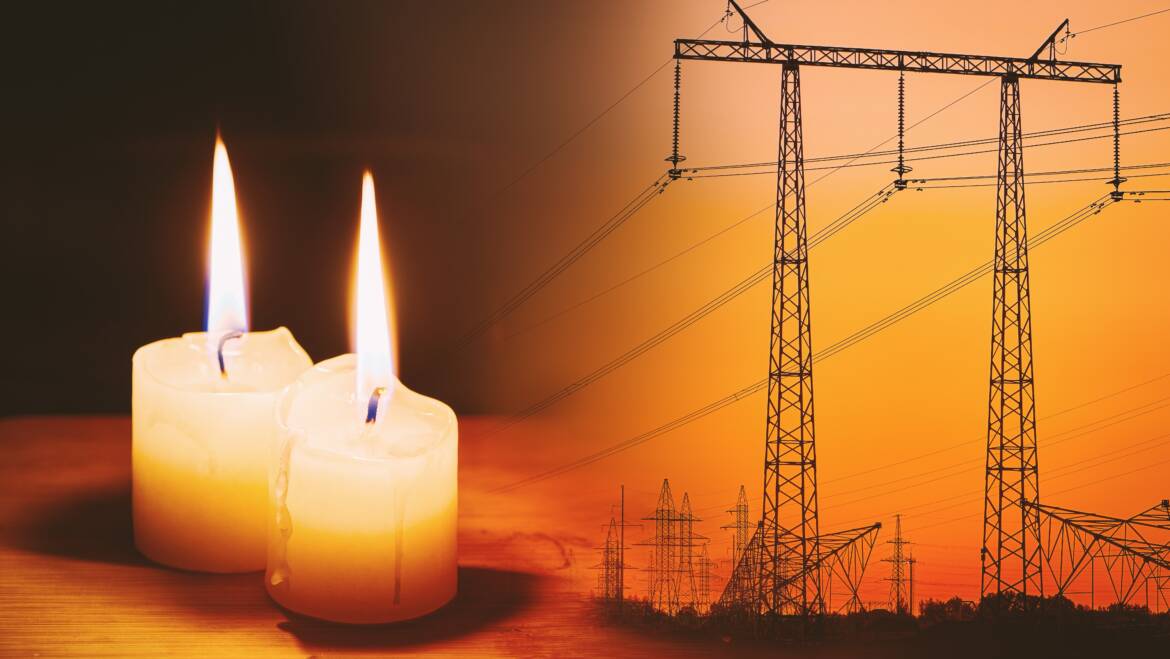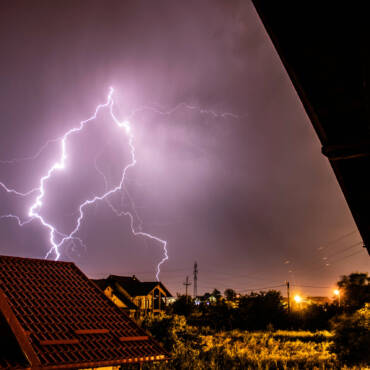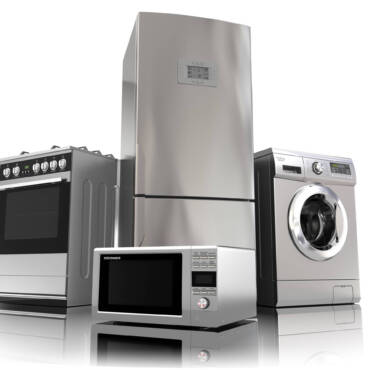Power outages can disrupt daily life and create safety concerns, especially during severe weather or grid failures. A standby generator provides a reliable backup power source, keeping essential systems like heating, cooling, refrigeration, and medical devices running. With professional power generator installation, homeowners can depend on a generator that activates when needed and operates safely.
This guide covers everything from selecting the best unit to installation requirements and maintenance, helping you find a solution that works for your home.
Benefits of Home Standby Generators
A home standby generator keeps the power on when the grid goes down. It connects to your home’s electrical system and runs on natural gas or propane, so there’s no need to refuel or set it up during an outage. When the power cuts off, the generator starts within seconds and keeps essential appliances running.
Homes in areas with frequent outages need a reliable power source. A standby generator keeps the heat on in winter, prevents food from spoiling, and powers medical equipment. Unlike a portable generator, it can support the entire house, so there’s no scrambling to choose which appliances to keep on.
A backup generator also adds value to a home. Buyers look for properties with reliable power solutions, especially where storms and outages happen often. It is a long-term investment that keeps a household running no matter what.
How to Choose a Durable Generator
Start by calculating how much power your home needs during an outage. List the appliances and systems you want to keep running, then check their wattage requirements. A whole-house generator can support everything, while a smaller unit can power essential circuits like refrigeration, lighting, and medical devices.
Select a fuel type that fits your setup. Natural gas and propane are the best choices for most homes since they provide a continuous supply without manual refueling. Diesel generators work well for larger systems but require on-site fuel storage. If your home already has a natural gas line, a generator that connects to it will be the easiest option.
Look for features that improve performance and reliability. An automatic transfer switch turns the generator on when the power goes out. Remote monitoring lets you check the generator’s status from anywhere. Noise-reducing models run quieter, which can be important in residential areas.
A Generac generator is a popular choice for homeowners looking for a dependable backup power solution. These units automatically restore power during an outage and come with advanced monitoring features that make them easy to manage.
Get Your Home Ready for Installation
Check local permit requirements before installing a standby generator. Many areas require permits for electrical and gas connections, and some have zoning restrictions on generator placement. Contact the local building department or consult a professional to make sure your installation meets all regulations.
Pick a safe location that follows manufacturer guidelines and local codes. The generator should sit on a stable surface, away from windows, doors, and vents to prevent exhaust from entering the home. Leave enough clearance around the unit for maintenance access and safe operation.
Decide whether to install the generator yourself or hire a professional. Standby generators require electrical work, fuel line connections, and testing to confirm they function correctly. A licensed electrician or an authorized independent service dealer can handle the process safely and prevent costly mistakes.
Power Generator Installation Process
A proper installation keeps the generator operational. Each step requires careful planning to avoid electrical hazards and compliance issues.
Prepare the Installation Site
Level the ground and place a concrete or composite pad to create a stable foundation. A secure base prevents the generator from shifting or settling over time. Some generators come with a built-in pad, but check that it meets local code requirements.
Position the Generator Correctly
Set the generator in the chosen location with enough clearance for airflow, maintenance, and safety. Secure it to the foundation to keep it stable during operation. A professional installer will confirm that the placement follows manufacturer guidelines and local regulations.
Connect to the Electrical Panel
Install an automatic transfer switch to link the generator to the home’s electrical panel. This switch detects power loss and shifts the electrical load to the generator. A licensed electrician should complete this step to prevent wiring issues that could damage appliances or create fire hazards.
Attach the Fuel Supply
Connect the generator to a natural gas line, propane tank, or diesel supply. The fuel line must be properly sized and secured to provide a steady fuel flow. If using propane or diesel, check that the tank is positioned correctly and that no leaks are present.
Test the System Before Use
After making electrical and fuel connections, test the generator to confirm it activates and runs correctly. A professional installer will simulate a power outage to verify that the system responds as expected. Once testing is complete, the generator is ready to provide backup power.
Keep the Generator Safe and Well-Maintained
A standby generator needs regular upkeep to stay reliable during outages. Generators require periodic maintenance to prevent unexpected breakdowns and keep the system ready for use. Checking fuel levels, inspecting connections, and running periodic tests help extend the generator’s lifespan.
Follow a Maintenance Schedule
Check the oil and filters regularly, especially after extended use. Most manufacturers recommend changing the oil after a set number of running hours. Replacing worn-out parts on time helps ensure maximum performance and reliability.
Schedule Professional Inspections
An annual inspection by a certified technician helps detect potential issues before they cause failures. Professionals check for leaks, test battery voltage, and verify that the automatic transfer switch works correctly. Regular servicing keeps the generator operating at peak performance.
Prevent Carbon Monoxide and Fire Risks
Generators must be placed outdoors, away from windows, doors, and vents. Keeping the unit in a well-ventilated area reduces carbon monoxide buildup. Remove debris around the generator to prevent overheating or fire hazards during operation.
Use Scheduled Maintenance Kits
Scheduled maintenance kits come with essential parts like oil, filters, and spark plugs. Keeping these supplies on hand makes it easier to keep up with routine maintenance procedures, reducing the risk of unexpected failures.
Follow Local Regulations and Permit Requirements
Installing a standby generator involves electrical and fuel connections, which means permits are often required. Many cities and counties have zoning laws that regulate generator placement, noise levels, and emissions. Checking these requirements before installation helps avoid fines and delays.
Most areas require electrical and gas permits before installation begins. Some locations also have specific guidelines for fuel storage and generator housing. A licensed electrician or installer can help navigate the permit process and confirm that the setup meets local codes.
Once installation is complete, an inspection may be required to confirm that the generator meets safety regulations. Inspectors check wiring, ventilation, and fuel connections to prevent hazards. Scheduling this final approval ensures the generator is legally ready to use.
Stick to These Rules for Safe Generator Installation
A properly installed generator provides reliable backup power during outages. Hiring a licensed professional makes sure the system meets safety codes and runs without issues. Whether upgrading an existing system or installing a new unit, following best practices helps avoid common problems.
Hire a Licensed Electrician or Authorized Dealer
Standby generators require electrical and fuel connections that must comply with local regulations. A certified installer handles wiring, permits, and safety inspections. Choosing an experienced professional prevents installation errors that could cause power failures or hazards.
Connect the Generator to the Electrical Panel
A transfer switch automatically shifts power from the grid to the generator when an outage occurs. Proper installation guarantees a seamless transition between power sources. This prevents overloads, protects appliances, and keeps the home running without interruption.
Follow Local Safety Guidelines
Generators must be installed outdoors on a stable foundation, away from windows, doors, and vents. Proper ventilation prevents carbon monoxide buildup, reducing health risks. Keeping the area around the generator clear ensures safe operation and easy maintenance.
Work With Danley 911 Home Services Electrical for Reliable Generator Installation
Power outages don’t have to disrupt your home. Danley 911 Home Services Electrical provides standby generators with professional installation, keeping your power on when utility power fails. From consultation to installation and ongoing maintenance, everything is handled for you.
Start with a free in-home consultation to find the right generator for your home. Professional installation provides safe connections, proper setup, and compliance with local regulations. Ongoing maintenance keeps your system ready for the next outage.
Submit our contact form now to book your consultation.
FAQs About Power Generator Installation
How much does it cost to have a generator installed?
A generator installation costs $3,000 to $10,000, depending on the size of the unit, fuel type, and site preparation. Larger generators or homes that need electrical upgrades can increase the total cost.
Do I need an electrician to install a generator?
Yes, only a licensed electrician should install a standby generator. The installation requires wiring the system to the electrical panel and setting up a transfer switch. Incorrect wiring can create fire hazards, damage appliances, and lead to code violations.
Can a homeowner install their own generator?
Homeowners can set up a portable generator, but installing a standby generator requires professional work. The process involves electrical connections, fuel line installation, and permits. Hiring a professional prevents safety risks and ensures the generator runs correctly during an outage.
How much does a generator for a 2000 square foot house cost?
A generator for a 2,000-square-foot home costs between $5,000 and $7,500 for essential circuits and $8,000 to $15,000 for a whole-house system, including installation. The price depends on power requirements, fuel type, and installation complexity.



